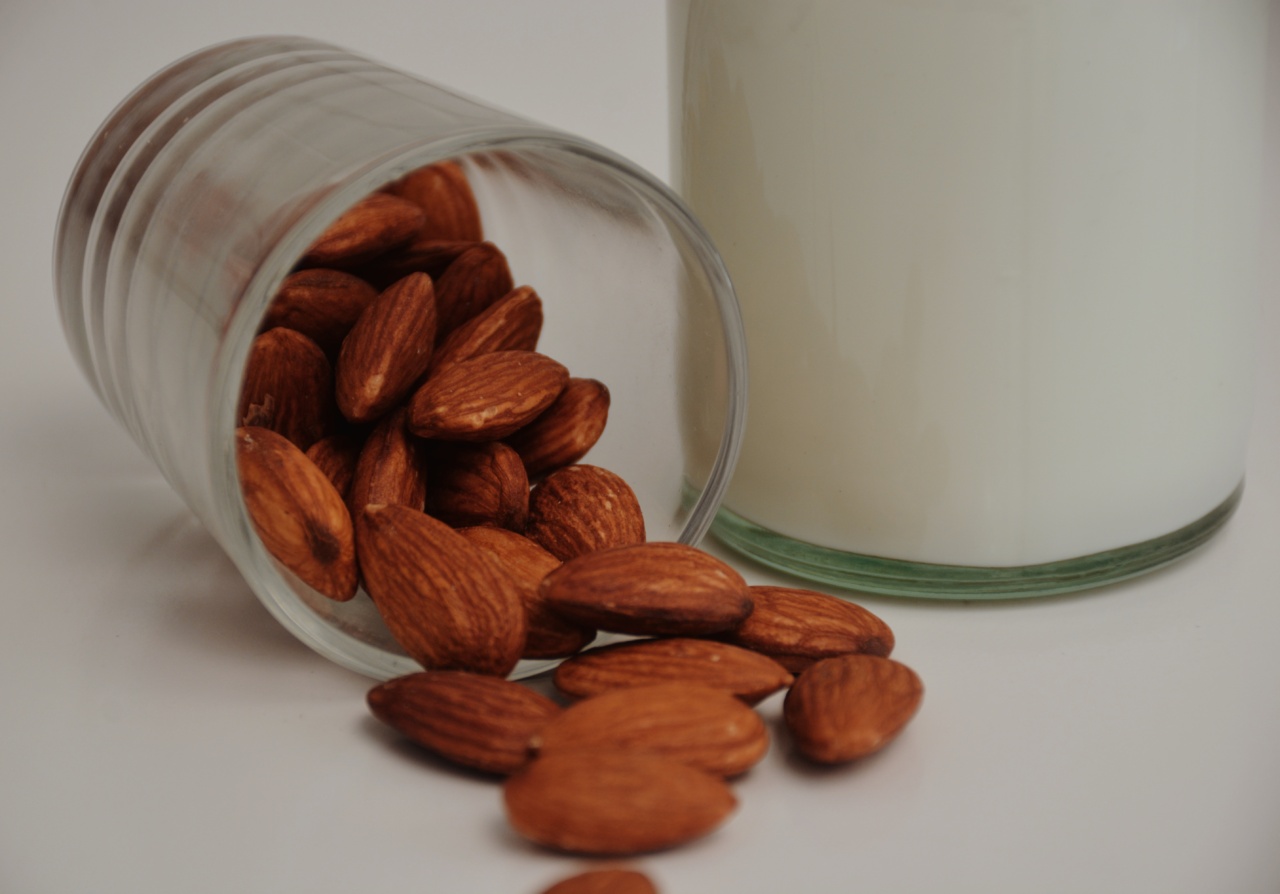Almond milk is a plant-based milk alternative made from ground almonds and water. It has a creamy texture and a nutty flavor, making it a popular choice for those who are lactose intolerant, allergic to dairy, or following a vegan or plant-based diet.
Benefits of Almond Milk
Almond milk offers several health benefits compared to traditional dairy milk. Here are some of the key advantages:.
1. Dairy-Free and Lactose-Free
Almond milk is an excellent option for individuals with lactose intolerance or dairy allergies. Since it is plant-based, it does not contain any lactose or dairy proteins that can cause digestive issues or allergic reactions.
2. Low in Calories
If you are watching your calorie intake, almond milk can be a great choice. It is typically lower in calories compared to whole milk.
Unsweetened almond milk contains approximately 30-40 calories per cup, while whole dairy milk contains around 140-150 calories per cup.
3. Nutrient-Rich
Almond milk is often fortified with essential vitamins and minerals, such as calcium, vitamin D, and vitamin E. These nutrients are vital for maintaining healthy bones, teeth, and overall immune function.
4. Suitable for Weight Management
Since almond milk is lower in calories and fat compared to whole milk, it can be a beneficial addition to a weight management plan. It provides a creamy and satisfying texture without adding excessive calories.
5. Vegan and Plant-Based
Almond milk is a popular choice among vegans and individuals following a plant-based lifestyle. It offers a milk alternative that is derived solely from plants, making it suitable for those who avoid animal products.
6. Versatile in Recipes
Almond milk can be used in a variety of recipes, such as smoothies, baked goods, soups, and sauces. Its mild flavor complements both sweet and savory dishes, making it a versatile ingredient in the kitchen.
How to Make Almond Milk at Home
Making your own almond milk at home is a simple and cost-effective way to enjoy this plant-based milk alternative. Here’s a step-by-step guide:.
1. Soak Almonds
Start by soaking 1 cup of raw almonds in water overnight or for at least 8 hours. This process helps soften the almonds and makes them easier to blend.
2. Rinse and Blend
After soaking, drain and rinse the almonds thoroughly. Transfer them to a blender along with 4 cups of fresh water. Blend on high speed for 2-3 minutes until the mixture becomes smooth and creamy.
3. Strain the Mixture
Place a nut milk bag or cheesecloth over a bowl or large jug. Pour the blended almond mixture into the bag or cloth, then squeeze gently to separate the liquid from the pulp. This will give you the smooth almond milk.
4. Add Flavor (Optional)
If desired, you can add a touch of sweetness or flavor to your almond milk. Some popular options include a teaspoon of vanilla extract, a tablespoon of honey or maple syrup, or a pinch of cinnamon.
5. Store and Enjoy
Pour the freshly made almond milk into a glass bottle or jar with a tight-fitting lid. It can be stored in the refrigerator for up to 5 days. Give it a good shake before each use and enjoy it in your favorite recipes or as a refreshing drink.
Almond Milk Variations
While plain almond milk is delicious on its own, there are a few variations you can try to add extra flavor and richness to your homemade almond milk:.
1. Chocolate Almond Milk
For all the chocolate lovers out there, you can add cocoa powder or melted dark chocolate to your almond milk blend. This creates a delightful chocolatey flavor that can be enjoyed on its own or used in desserts and smoothies.
2. Vanilla Almond Milk
If you prefer a more subtle flavor, you can add a teaspoon of pure vanilla extract or the seeds from a fresh vanilla bean to your almond milk blend. This gives it a lovely vanilla aroma and taste.
3. Matcha Almond Milk
For a unique twist, add a teaspoon of high-quality matcha powder to your almond milk blend. This creates a vibrant green color and adds a hint of natural caffeine for a refreshing and energizing drink.
4. Unsweetened Almond Milk
If you prefer a sugar-free option, you can leave out the sweeteners altogether. Unsweetened almond milk is still delicious and can be used in both sweet and savory recipes.
Is Almond Milk Suitable for Everyone?
While almond milk is a popular dairy milk alternative, it may not be suitable for everyone. Here are a few factors to consider:.
1. Nut Allergies
Individuals with nut allergies should avoid almond milk or any other plant-based milk derived from nuts. It is essential to choose alternative dairy-free milks, such as soy, oat, or rice milk.
2. Thyroid Conditions
Almonds are naturally high in goitrogens, which are compounds that can interfere with the function of the thyroid gland. If you have a thyroid condition, it is best to consult with a healthcare professional before consuming almond milk regularly.
3. Nutritional Considerations
While almond milk is fortified with essential nutrients, it is generally lower in protein compared to dairy milk. If you rely on milk as a significant protein source, you may need to consider alternative protein-rich options.
Conclusion
Almond milk is a versatile and nutritious plant-based alternative to dairy milk. It offers several health benefits, including being dairy-free, low in calories, and rich in essential nutrients.
Making almond milk at home is a simple process that allows you to customize the flavor and sweetness according to your preference. However, individuals with nut allergies or specific health conditions should consider suitable alternatives. Whether enjoyed on its own, in recipes, or as a refreshing beverage, almond milk is an excellent addition to a well-balanced diet.




























